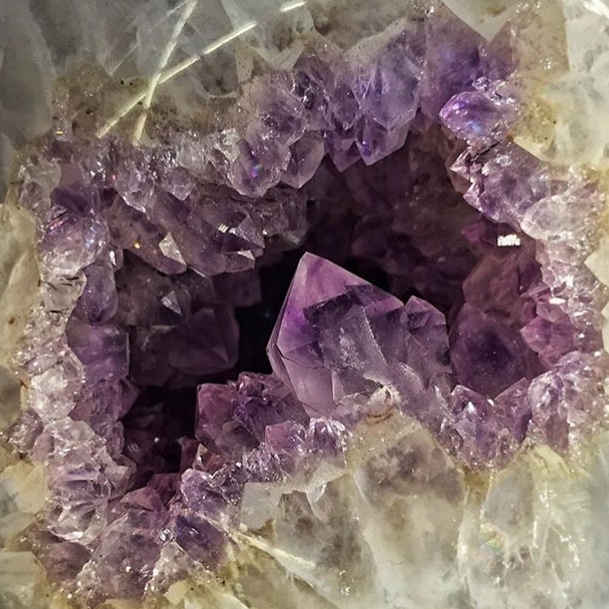Perseus Rescuing Andromeda
- Artist
- Material
- Cavaliere D'Arpino
- Oil on lapis lazuli
Installation view of Paintings on Stone: Science and the Sacred 1530–1800
Members always free
This exhibition occurred in the past. The archival exhibition summary below describes the exhibition as it was conceived while on view.
In 2000 the Saint Louis Art Museum purchased Cavaliere d’Arpino’s Perseus Rescuing Andromeda, an exceptional painting on lapis lazuli. The acquisition of the small, stunning work of art spurred extensive research that culminates in Paintings on Stone: Science and the Sacred 1530–1800, the first systematic examination of the pan-European practice of this unusual and little-studied artistic tradition.
By 1530 Italian artists had begun to paint portraits and sacred images on stone. At first artists used slate and marble. By the last decades of the 16th century, the repertoire expanded, eventually including alabaster, lapis lazuli, onyx, jasper, agate, and amethyst. In addition to demonstrating the beauty of these works, Paintings on Stone explains why artists began using stone supports and the role that stone played in the meaning of these endeavors.
Bringing together more than 70 examples by 58 artists, Paintings on Stone represents major centers of stone painting and features 21 different stones.
The exhibition is curated by Judith W. Mann, senior curator of European art to 1800, with Andrea Miller, research assistant for European art to 1800.
Some works of art in this exhibition include references to physical and sexual violence.
#PaintingsOnStone #ScienceAndTheSacred
A richly illustrated, color catalogue edited and authored by Judith W. Mann, curator of European art to 1800 at the Saint Louis Art Museum, along with an international team of scholars is available for purchase in the Museum Shops or by phone at 1.314.655.5249.
An addendum to the 2020 catalogue, which reflects the 2022 exhibition, is available here.
Experience the exhibition Paintings on Stone: Science and the Sacred 1530–1800 with this virtual tour.
Click on icons located within the galleries to access introductory wall panels and a close-up view of each artwork and the accompanying label text. A selection of artworks have links to audio recordings and corresponding transcripts, and icons linked to videos and PDFs also provide additional information.
Enjoy the Museum’s new, enhanced virtual audio guide for Paintings on Stone: Science and the Sacred 1530–1800. This audio guide highlights works of art demonstrating the extraordinary creativity of artists who selected stone panels as the supports for their paintings. Bring your headphones and listen during your in-gallery visit or experience the guide from home.
To identify and explain the properties of the stone supports used by the artist’s featured in the exhibition, the Museum enlisted the expertise of John Encarnación, professor of Earth and Atmospheric Sciences at Saint Louis University. This resource is available online and in the Paintings on Stone: Science and the Sacred 1530-1800 catalogue appendix available in the exhibition.
The Saint Louis Art Museum is committed to being accessible and welcoming to all visitors. Learn More.
Large print labels for Paintings on Stone: Science and the Sacred 1530–1800 are available online and upon request at the Special Exhibition desk in Taylor Hall.
A transcript of the audio guide for the exhibition is available online and upon request at the Special Exhibition desk in Taylor Hall.
This recorded program was originally presented via Zoom on February 24, 2022.
Judith Mann, senior curator of European art to 1800, discusses her nearly 20-year endeavor to bring the exhibition "Paintings on Stone: Science and the Sacred 1530–1800" to fruition. She discusses the emergence of this artistic process in the 16th century as well as the origins of the exhibition when the Museum purchased a small painting on lapis lazuli in 2000.
Paintings on Stone: The Science and the Sacred 1530-1800 is organized by the Saint Louis Art Museum. It is presented with generous support from the Betsy & Thomas Patterson Foundation. Major support is provided by the E. Desmond Lee Family Endowment for Exhibitions. Additional funding is provided by the Missouri Arts Council, a state agency, and the National Endowment for the Arts. The exhibition symposium is sponsored by Phenix Marble Company and supported by a grant from the Samuel H. Kress Foundation.


